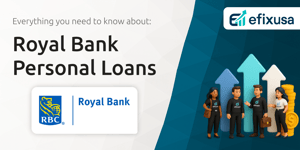
In today’s fast-paced global economy, the forex market stands as a beacon of opportunity for traders and investors alike. By understanding the nuances of different account types, you can tailor your strategy to match your individual goals and risk tolerance.
This comprehensive guide will explore the fundamentals of forex investing, from basic concepts to advanced compliance considerations. You will gain practical insights to make informed decisions, whether you are a seasoned professional or a newcomer navigating your first trades.
The foreign exchange (forex) market is a decentralized, over-the-counter trading venue where global currencies are exchanged 24/5. It remains the world’s largest financial market, with daily volumes frequently exceeding $7 trillion.
Operating across major centers such as London, New York, Tokyo, and Sydney, forex trading never truly sleeps. This constant activity provides a unique opportunity to engage in currency speculation and hedging around the clock.
Selecting the right account is crucial for aligning with your capital, experience, and trading objectives. Brokers typically offer a spectrum of account structures, each with distinct features and requirements.
Understanding fundamental terms is essential for effective decision-making. A pip represents the smallest price increment, typically 0.0001 for most major pairs. The spread—the gap between bid and ask prices—directly impacts trading cost.
Leverage allows you to control larger positions with a fraction of the required capital. While it can amplify gains, it also magnifies losses. Ratios may range from 1:10 to 1:500, so exercise caution and apply prudent position sizing at all times.
Lot sizes vary from standard (100,000 units) to micro and cent accounts (1,000 or even 100 units), enabling you to scale risk. Selecting appropriate volume controls exposure and protects against unexpected volatility.
Compliance underpins the safety and integrity of your trading environment. Reputable brokers are often regulated by authorities such as the UK’s FCA or the US CFTC, demonstrating adherence to rigorous standards.
Anti-Money Laundering (AML) and Know Your Customer (KYC) protocols are mandatory. You will submit identity documentation, undergo transaction monitoring, and comply with reporting obligations to avoid financial crime.
Jurisdictional regulations differ: some regions impose tighter leverage limits and stricter client fund segregation. Always verify that your broker holds a valid license in a reputable jurisdiction before depositing funds.
Every broker must issue clear risk warnings, highlighting that forex trading carries substantial volatility and the potential for significant losses. Informed traders use robust tools to safeguard capital.
Reputable firms maintain segregated accounts for client deposits, ensuring your funds are kept separate from operational capital. This is a hallmark of financial integrity and client protection.
Align your selection with your trading objectives. Active day traders may prefer ECN or STP accounts, benefiting from tighter spreads and faster execution. Conversely, passive investors might opt for managed or PAMM accounts.
Assess your capital: if you are risk-averse or just starting out, micro and cent accounts let you learn while limiting downside. Examine fee structures—spreads, commissions, swap fees—particularly if you plan to hold positions overnight.
Begin with a demo account to minimize risk while honing skills. Once comfortable, transition gradually to a live micro or mini account. Always test trading strategies on historical data and maintain a trading journal to track performance.
As of 2024, daily forex turnover exceeds $7 trillion, with EUR/USD accounting for roughly 28% of global volume. Retail participation continues to climb, driven by low-entry micro accounts and user-friendly platforms.
Following high-profile broker scandals, regulators have tightened oversight, enforcing stricter capital requirements and enhanced transparency. This trend fosters a safer trading landscape but also underscores the importance of due diligence.
Forex investing offers dynamic opportunities but demands a disciplined approach to risk and thorough understanding of account features. By choosing the right account, adhering to regulatory standards, and applying sound risk management, you can navigate the forex market with confidence and purpose.
References













